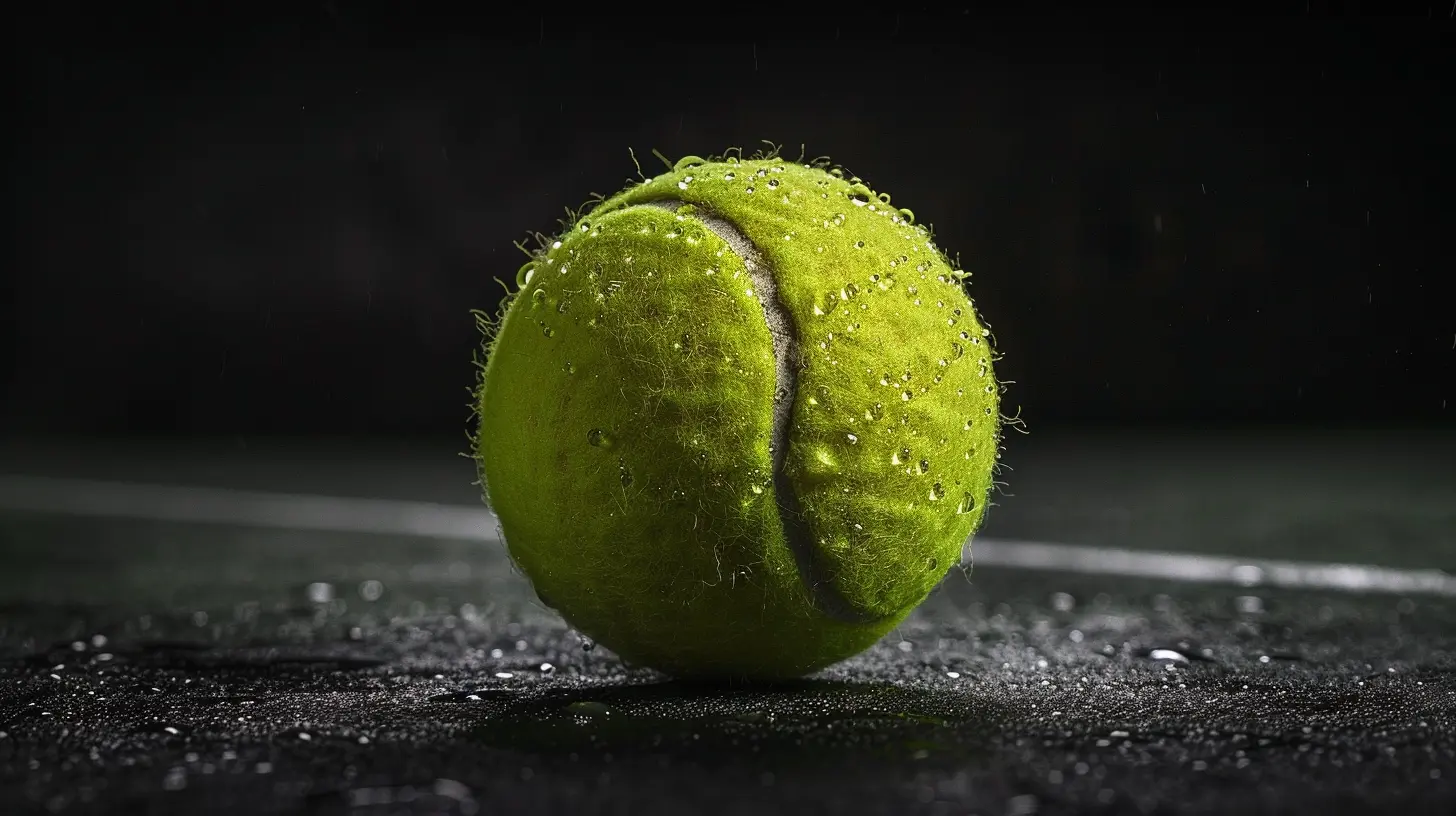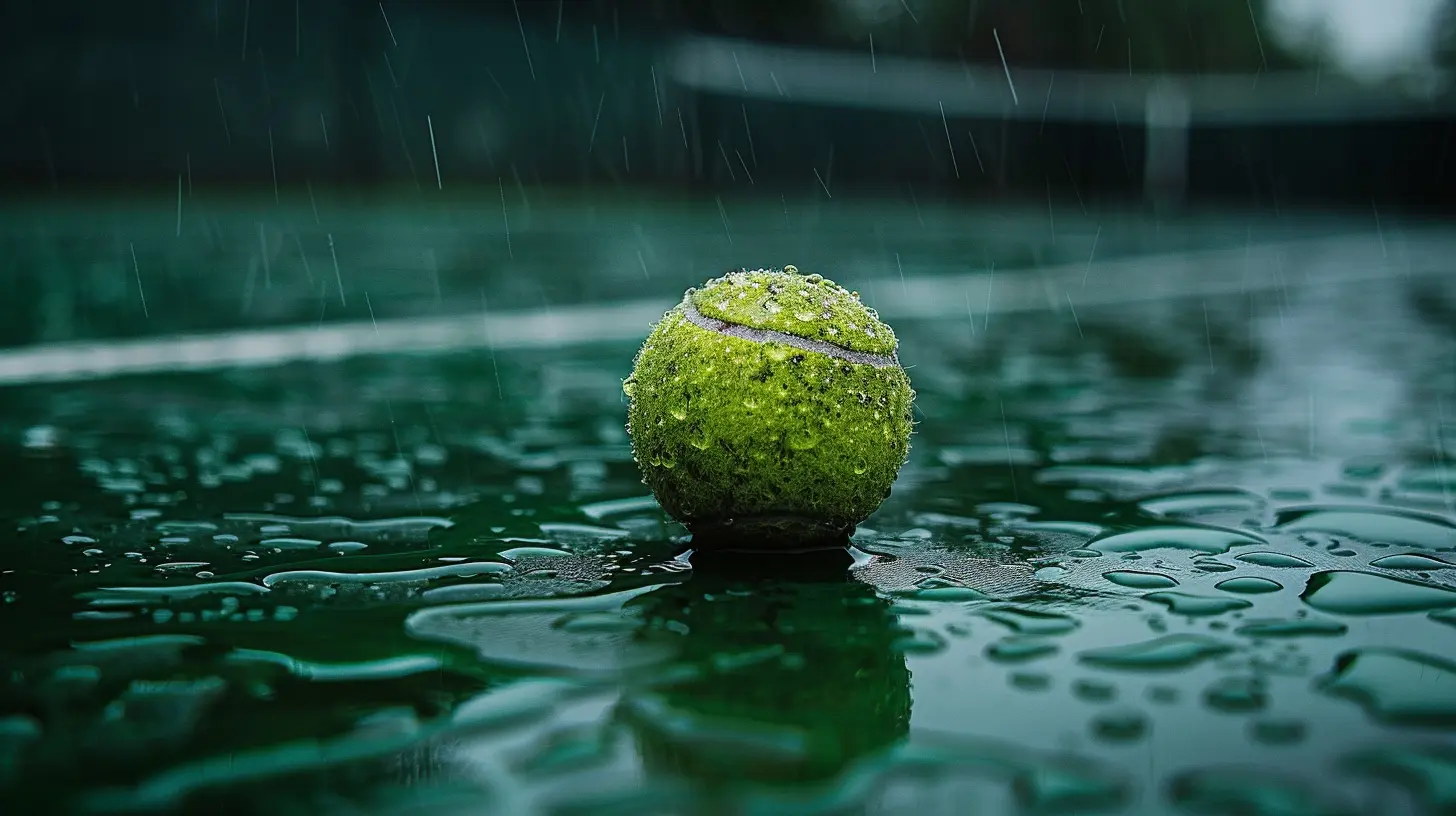Tennis Training: Strength and Conditioning for Peak Performance
17 November 2025
So, you love tennis? Maybe you play a few matches a week, or maybe you're seriously chasing that next-level performance? Either way, if you want to dominate the court—smashing serves, chasing every drop shot, and outlasting your opponent in those brutal rallies—you’ve got to train smarter, not just harder.
Let’s dive into a part of the game that too many players overlook: strength and conditioning. This isn’t just about bulking up like a bodybuilder. Nope. It’s about building a body that can serve bombs, move like lightning, and hold up through grueling matches, set after set.
Ready? Let’s break down how to train for peak performance on the tennis court.
Why Strength and Conditioning Matters in Tennis
Tennis looks elegant from the sidelines—fluid swings, fast footwork, perfect timing. But underneath that finesse is raw athleticism. You’re sprinting, lunging, twisting, rotating, and jumping—all in short bursts, over and over again. That's a whole-body workout every single point.Here’s the Thing...
If you're not strong enough or fit enough, your game will suffer. Simple.- You’ll get tired faster.
- Your form will break down.
- Injuries will creep in.
Strength and conditioning isn't just for the pros. It’s your secret weapon. Whether you're aiming to top your league or just want to stop gassing out in the second set, it's time to get serious about your fitness.
How Tennis Training Differs From Other Sports
Now, you might wonder: “Can’t I just lift weights and go for runs?”Not so fast.
Tennis is unique. It’s not like running a marathon or bench-pressing max weight in the gym. It’s explosive, multi-directional, and unpredictable. You need a training plan that reflects that.
Think About It:
- Tennis demands agility—you move side-to-side, forward, backward, diagonally.- It requires rotational strength—your serve and forehand rely heavily on your core and shoulders.
- And don’t forget endurance—matches can go for hours.
So, the takeaway? Your training needs to be functional, sport-specific, and strategic.
Key Components of Tennis Strength and Conditioning
Let’s break this down into digestible chunks. Here are the five pillars of tennis training that build a bulletproof, high-performing athlete:1. Dynamic Warm-Ups
2. Strength Training
3. Speed and Agility Drills
4. Endurance and Conditioning
5. Flexibility and Mobility Work
Let’s look at each one in detail.
1. Dynamic Warm-Ups – Start Smart
You’re not just stretching here. This is about activating your muscles, increasing your heart rate, and getting your body game-ready.Try This Pre-Court Warm-Up:
- High knees – 30 seconds- Butt kicks – 30 seconds
- Lateral shuffles – 30 seconds
- Arm circles & swings – 30 seconds
- Walking lunges with a twist – 1 minute
- Jumping jacks – 1 minute
Warm up like this before every session. It preps your body and helps prevent injuries. Think of it as revving up your engine before a race.
2. Strength Training – Build Functional Power
You don’t need to bench double your bodyweight or deadlift like a powerlifter. But you do need to be strong in the right way—for tennis.Key Areas to Focus On:
- Legs – For explosive starts and stable stops.- Core – For rotation, balance, and energy transfer.
- Shoulders & Arms – For powerful serves and stable strokes.
- Posterior Chain (Backside) – Glutes, hamstrings, and back muscles keep your movement strong and prevent injuries.
Sample Weekly Strength Routine:
Day 1 – Lower Body Focus:- Squats – 3 sets of 10
- Lunges (walking or reverse) – 3x12 each leg
- Box jumps – 3x8
- Glute bridges – 3x15
Day 2 – Upper Body Focus:
- Push-ups – 3x15
- Pull-ups or lat pull-downs – 3x10
- Dumbbell shoulder press – 3x12
- Plank rows – 3x10 each side
Day 3 – Core & Stability:
- Russian twists – 3x20
- Planks (front and side) – 3x1 minute
- Bird-dogs – 3x10 each side
- Medicine ball slams – 3x12
Focus on proper form. Quality over quantity. This builds strength that actually translates to your tennis game.
3. Speed and Agility – Train for Quickness
Tennis demands fast feet and sharp reactions. Ever chased down a short ball and still had to make a clean shot? That’s agility at work.Must-Do Drills:
- Ladder drills – for foot speed- Cone shuffles – quick lateral movement
- Sprint and backpedal drills – explosive changes in direction
- Reaction ball drops – hand-eye coordination and reflex training
Do 20–30 minutes of speed and agility 2–3 times a week. Think short bursts, lots of changes in movement, and maximum effort.
You’re building your fast-twitch muscle fibers—aka the “get-there-quick” muscles.
4. Endurance and Conditioning – Go the Distance
You know what separates great players from good ones? Gas left in the tank in the third set.Tennis isn’t just quick sprints. It’s quick sprints over and over again, sometimes for hours. So you need a mix of anaerobic and aerobic conditioning.
What That Means:
- Aerobic = slower, steady-paced work (like long runs or bike rides)- Anaerobic = short, intense bursts (sprints, interval training)
Weekly Conditioning Plan:
- 1 Long session (30–40 minutes of steady cardio)- 2 Interval sessions (e.g., 20 minutes of 30-seconds sprint / 1-minute walk)
- 1 Circuit training session (combine strength + cardio like burpees, jump squats, mountain climbers)
This builds stamina, short-burst recovery, and overall court endurance. Your legs (and lungs) will thank you by the third set.
5. Flexibility and Mobility – Move Freely
Tight muscles hold you back. Literally. If your hips are stiff, you can’t get wide for a forehand. If your shoulders are tight, your serve suffers.Daily Mobility Routine (10 Minutes):
- Arm circles- Shoulder wall slides
- Hip openers (like pigeon pose or lizard stretch)
- Hamstring stretch
- Thoracic spine rotation
- Foam rolling major muscle groups
Think of mobility like oiling your machine. It keeps everything running smoothly and helps prevent those annoying, lingering injuries.
Don’t Forget Recovery: Rest Like You Mean It
Here’s a secret: You don’t get stronger or faster during your workouts. You get better when you rest.Without solid recovery—sleep, hydration, stretching, nutrition—you’re just wearing yourself down.
Quick Tips:
- Aim for 7–9 hours of sleep per night- Hydrate like crazy (before, during, and after practice)
- Eat balanced meals with protein, carbs, healthy fats
- Take at least one full off-day per week
- Use ice baths, massage, or light yoga for active recovery
Burnout is real, and injuries are game-ruiners. Respect your recovery time. It’s as important as your workouts—maybe more.
Common Mistakes Tennis Players Make in Their Training
Let’s be real—everyone messes up sometimes. But some training mistakes are all too common among tennis players:1. Skipping the Warm-Up – Cold muscles = higher risk of injury.
2. Lifting Heavy Without Purpose – Strength work should support your movement, not just bulk you up.
3. Neglecting Cardio – You may hit hard for 10 minutes, but can you keep that intensity for 2 hours?
4. Forgetting the Core – Tennis is a rotational sport. Your power comes from the middle.
5. Inconsistent Training – One good week won’t fix months of inactivity.
Avoid these traps, and you’ll be way ahead of the curve.
Final Thoughts: Train Like You Play
If you want to elevate your tennis game, your training has to match the demands of the sport. That means explosive power, lightning-fast agility, endless endurance, and a body that stays injury-free. Strength and conditioning isn’t just about muscles—it’s about movement, mindset, and long-term performance.So—what's stopping you? Lace up. Lift smart. Train hard. And when that match goes to a tie-breaker in the third set, you’ll be the one standing strong, ready to win the point.
all images in this post were generated using AI tools
Category:
TennisAuthor:

Nelson Bryant

